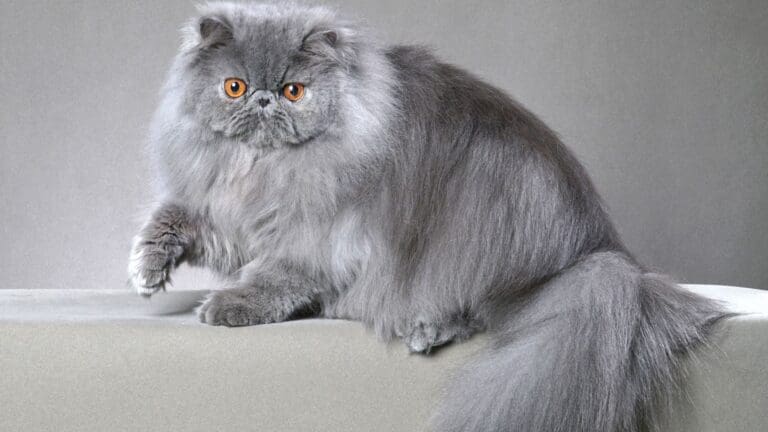Persian

The Persian cat reigns supreme in feline elegance, casting a spell of enchantment with its luxurious coat, distinctive features, and regal demeanour.
Lifespan
10 – 15 Years
Temperament
Persian cats often form strong and profound bonds with their chosen human companions. While their affectionate nature is undeniable, Persian cats also possess a streak of independence that adds depth to their personality. They appreciate having space and time for contemplation, often retreating to cozy corners where they can indulge in solitary musings. They can thrive in various living situations, from tranquil households to bustling apartments.
Weight
Male up to 13 Lbs
Female up to 12 Lbs
Coat
Persian cats have long, dense, and luxurious fur that covers their entire body, including the tail. The fur can be as long as 6 inches or more. The fur of Persian cats has a fine and silky texture that is soft to the touch.
One of the most striking features of the Persian cat’s coat is its large ruff of fur around the neck, which gives them a distinctive and majestic appearance.
Color
Persian cats come in various coat colours and patterns, including solid colours (white, black, blue, cream, and more), bi-colour, tri-colour (calico), tabby, and more. The breed standard recognizes various colour divisions and patterns.
Grooming
Due to the length and density of their fur, Persian cats require regular grooming to prevent matting and tangling. Regular brushing helps keep their coat in good condition and to avoid discomfort.
Shedding
Persian cats do shed. Like all cats, Persian cats naturally shed their fur as part of their normal growth and renewal cycle. However, due to their coat’s long and dense nature, Persian cats can have a more noticeable shedding problem than short-haired breeds.
Common Health Problems
- Respiratory Issues
- Dental Problems
- Eye Conditions (cherry eye and entropion)
- Skin and Coat Issues
- Urinary Tract Issues
- Obesity
- Heat Sensitivity
Regular veterinary check-ups and attentive care are essential to manage and prevent these potential health problems in Persian cats. Providing a balanced diet, maintaining a clean and comfortable living environment, and promptly addressing any health concerns can help ensure your Persian cat’s healthier and happier life.
History
The story of the Persian cat begins in the ancient land of Persia, modern-day Iran, where it was cherished by nobility and royalty. In the courts of Persian monarchs, these cats were considered precious treasures, often adorning palaces and receiving the utmost care and attention.
As trade routes expanded and civilizations connected, the allure of the Persian cat spread beyond the borders of Persia. Traders and explorers carried these enchanting companions to distant lands, where they continued to captivate the imagination of those they encountered. From the palaces of China to the opulent courts of Europe, the Persian cat’s reputation as a symbol of luxury and refinement grew. As the world evolved, so did the role of the Persian cat. No longer confined to the exclusive domains of the elite, these exquisite felines found their way into the hearts and homes of people from all walks of life.
Affection | 4/5 |
Friendliness | 5/5 |
Shedding | 5/5 |
Grooming | 4/5 |
Dog Friendly | 2/5 |
Kid Friendly | 2/5 |
Intellignece | 3/5 |
Health | 3/5 |
Vocalization | 2/5 |
